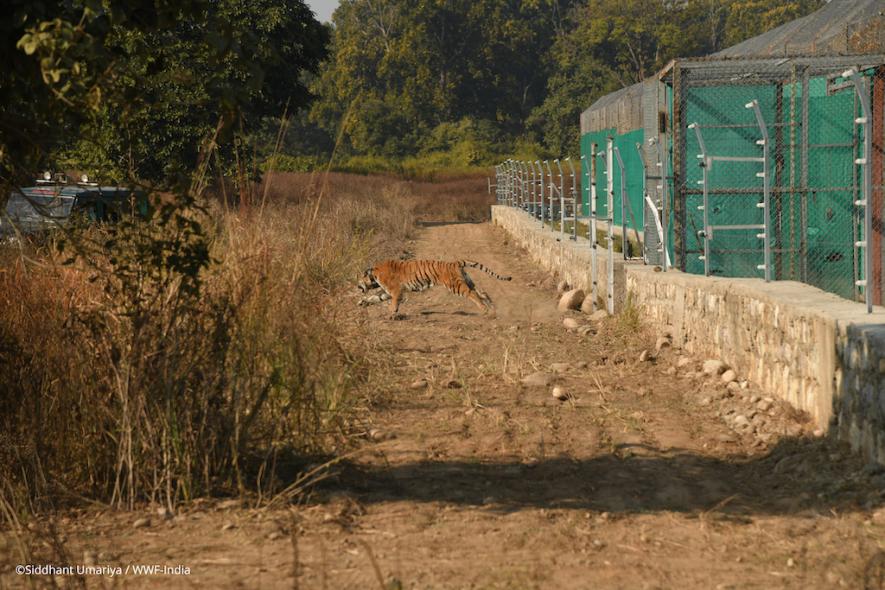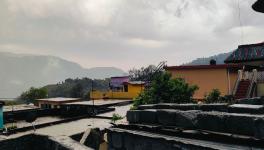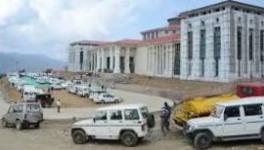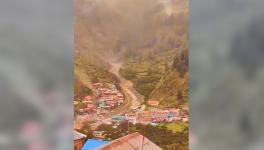After 10 Years, Tigers Finally Translocated to Western Part of Rajaji Tiger Reserve

Tigress being released from the enclosure. Photo by : Siddhant Umariya/ WWF India
More than ten years after the first proposal was made by Dehradun-based Wildlife Institute of India (WII), the process of tiger translocation for the western part of the Rajaji Tiger Reserve (RTR) in Uttarakhand has finally happened. A five-year old tigress and a six-year old tiger were brought in from the buffer zone of the Jim Corbett Tiger Reserve in the month of December last year and January respectively. They were translocated to the Motichur range in the western RTR.
It was the first such tiger translocation in Uttarakhand. The project was launched to augment tiger breeding in western RTR, an area which the migrant population of tigers is unable to access due to corridor bottlenecks for more than 15 years.
However, the excitement has been dampened a bit due to the tiger losing its radio collar within a couple of days of his arrival and an old tigress, an old inhabitant of the area, going missing.
Losing the radio collar is certainly a set back as the teams engaged in monitoring the tiger would not be able to follow its movement via satellite.
The Uttarakhand Forest Department and scientists from the World Wide Fund (WWF) for Nature are engaged in the translocation and monitoring of tigers, a process being supported by the WII.
“There was a sense of panic among locals living in the fringe areas as well as authorities who feared that agitated tiger may venture out of the forest boundaries and create havoc in the human settlements in the vicinity,” an official said.
Rajiv Bhartari, Uttarakhand’s head of forest force (HoFF) declined to comment on the matter. He said officials from the National Tiger Conservation Authority (NTCA) had been in direct touch with chief wildlife warden (CWLW) J.S. Suhag and he was not up-to-date with the matter.
Bivash Pandav, former WII scientist and director of the Mumbai-based The Bombay Natural History Society, who had also drafted the first proposal for tiger translocation in RTR and had been studying the area for long, said: “Wild animals do lose their radio collars occasionally. It is not easy to radio-collar them again, especially tracing them in a tricky hilly terrain like the RTR is very difficult, so the best way is to monitor their movement through camera-trap images.”
However Suhag asserted that the tiger was settled within the park boundaries. “We have mounted numerous camera traps within the western zone which have given us pictures of the tiger settling well in its new territory. Our teams are guarding the area. So there is no reason to panic,” he added.
AK Singh, team leader of the Terai-Arc Landscape, WWF, told NewsClick that the tigress, who was also radio-collared, “has taken well to the new territory while the tiger, who is more agitated and aggressive, got rid of the collar. We have to keep the collar a little loose so that it does not suffocate a growing tiger. The tiger is adapting to its new environs and has not strayed out,” he added.
On the issue of the old tigress, who has gone missing, Suhag said that such animals are able to walk for hundreds of kilometres in instances and reasoned that the tigress too may have moved to another contiguous forest and thus it would be wrong to say that it had gone missing.
Two tigresses, aged around 15 years, had been reportedly inhabiting the area since their birth.
“The presence of male tigers in the western RTR has not been noticed after 2005.There are also no confirmed reports of tiger movement between the eastern part of the RTR and the western part. As a result, the two tigresses, of breeding age, are genetically isolated from the rest of the tiger population in the Terai-Arc Landscape. There is no evidence of breeding of tigers in western RTR after 2003,” said Vinod Rishi, former additional director general of wildlife.
The river Ganges bifurcates RTR into two sections. The eastern side of the national park about 250 sq kms and the rest – 571 sq kms – lies on the western side.
There is only a small patch of forest left between the eastern and western parts which has been blocked by heavy traffic on the highway, an army ammunition dump which has been around since the Indo-China war in 1962, canal and a railway line, aside from the flourishing population of Haridwar and Raiwala.
Y.V. Jhala, a WII scientist, had suggested that if an overpass could be built over the Dehradun-Haridwar highway and the army dump was shifted then a passage could be opened for movement between the two sides. He has been stressing on translocation as no gene flow of tigers was occurring here.
With completion of work at two-km long Haripurkalan flyover , the biggest in the state, AK Singh expressed hope that if the entire traffic is diverted on flyover, then tigers and other wild animals will be able to cross the road easily.
A.K. Singh expressed hope that if the entire traffic is diverted over the flyover then tigers and other wild animals would be able to cross the road easily.
According to official authorities, RTR has capacity of 83 tigers. At present it has 35 tigers in Eastern RTR and two tigresses in western RTR. “I will translocate three – two tigresses and one tiger – more from the Corbett buffer area with a gap of one week after each translocation,” said Suhag.
Officials are hopeful that with the introduction of five new feline individuals during this breeding season, the tiger population may be strengthened in a vast area of western RTR which is replete with a rich herbivorous population and a grassland habitat.
NewsClick reached out to NTCA member secretary S.P Yadav on the phone and sent him questions. The story will be updated with his response as soon as it is forthcoming.
The author is a Chandigarh-based independent journalist who writes on the environment, wildlife, climate change, social and gender issues.
Get the latest reports & analysis with people's perspective on Protests, movements & deep analytical videos, discussions of the current affairs in your Telegram app. Subscribe to NewsClick's Telegram channel & get Real-Time updates on stories, as they get published on our website.
























